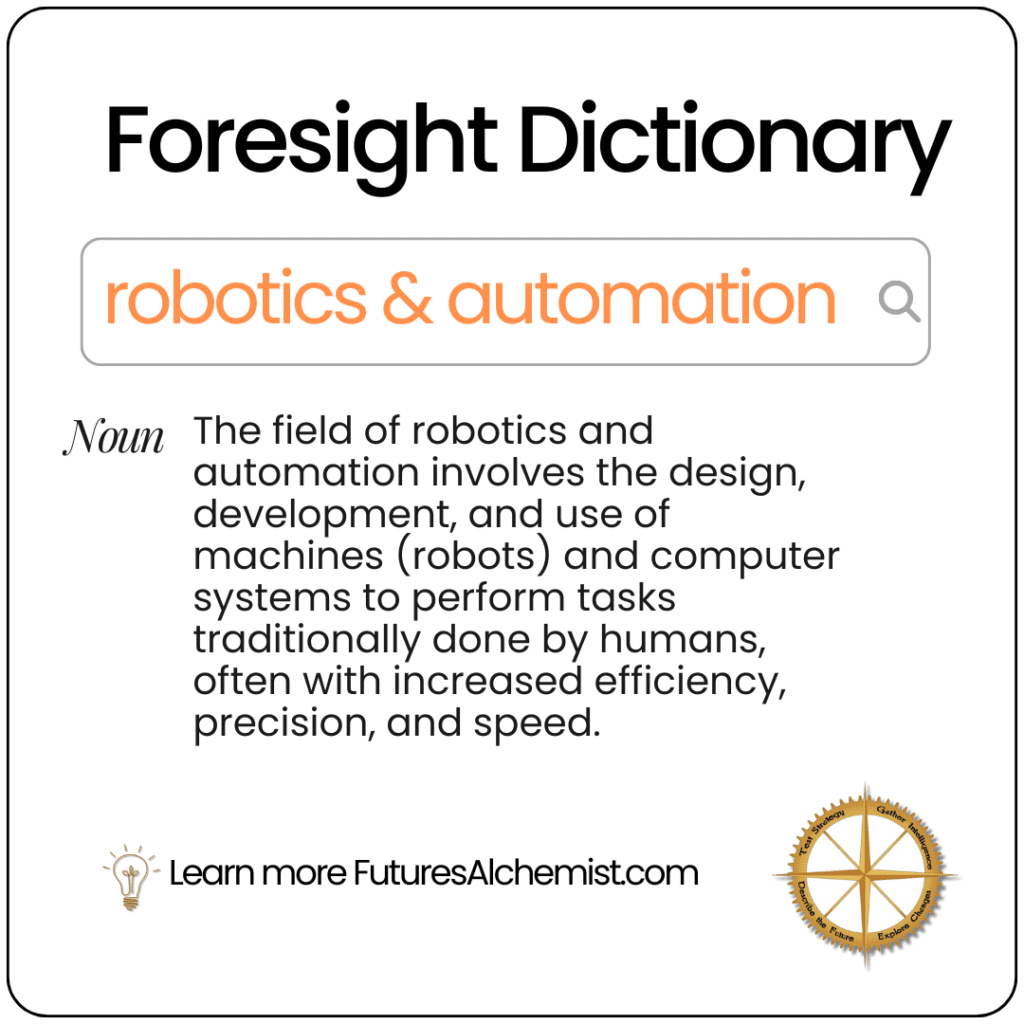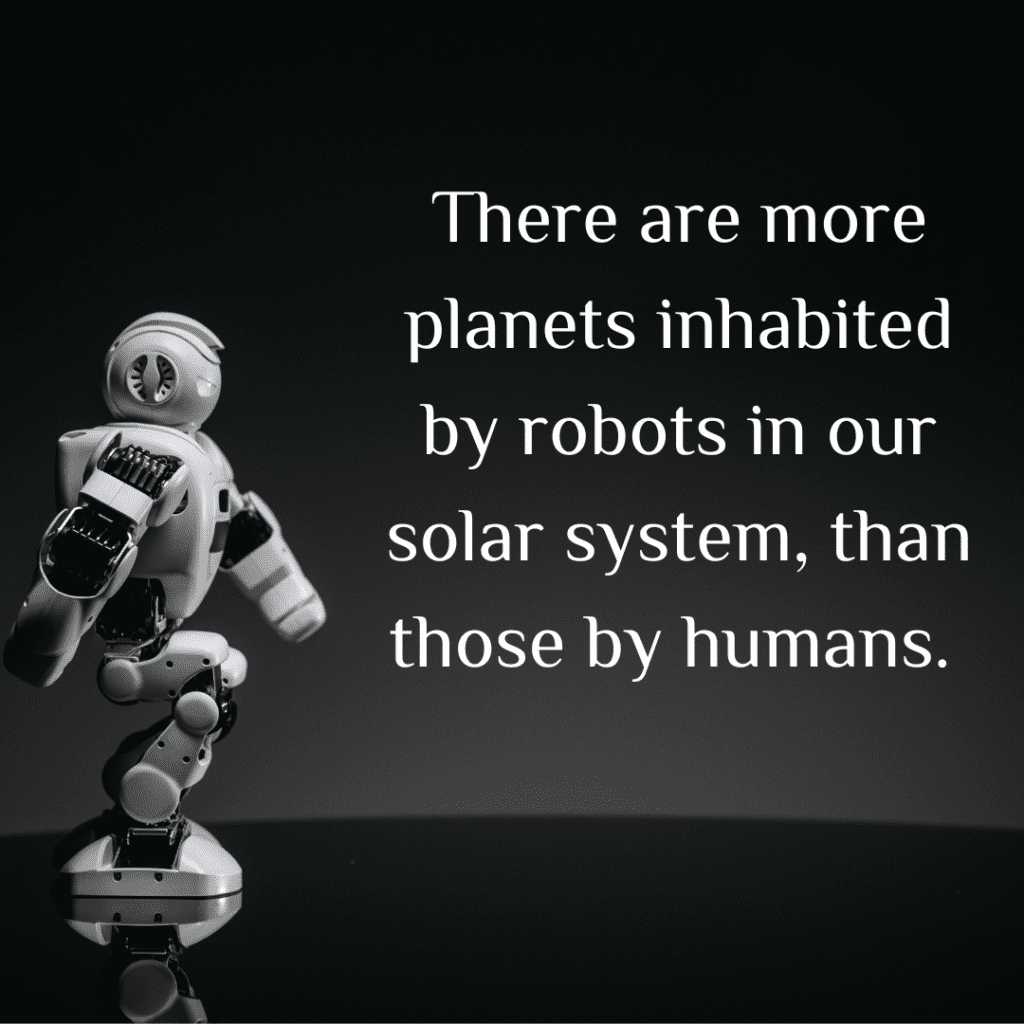

Definition
The field of robotics and automation involves the design, development, and use of machines (robots) and computer systems to perform tasks traditionally done by humans, often with increased efficiency, precision, and speed.
Example
The automotive industry has widely adopted robotics and automation, particularly in assembly lines. For instance, Tesla’s Fremont factory uses hundreds of robots to manufacture electric vehicles, performing tasks like welding, painting, and parts assembly.

Ask yourself
- How might robotics and automation impact employment in various industries?
- What ethical considerations arise from increased use of robots in society?
- How can robotics and automation be used to solve global challenges?
- What skills will be necessary for humans to work alongside robots?
- How might robotics and automation affect economic inequality?
Tools
- Scenario Planning: To envision potential futures with increased robotics and automation
- Trend Analysis: To track developments in robotics and AI technologies
- Delphi Method: To gather expert opinions on the future of robotics and automation
- Futures Wheel: To explore the cascading impacts of robotics and automation on society
iRobot
This movie is based on a synthesis of books written by science-fiction author, Isaac Asimov. I highly recommend it as a primer on the 4 Laws of Robotics as well as a good philosophical understanding of ethics – both human and technology ethics.



